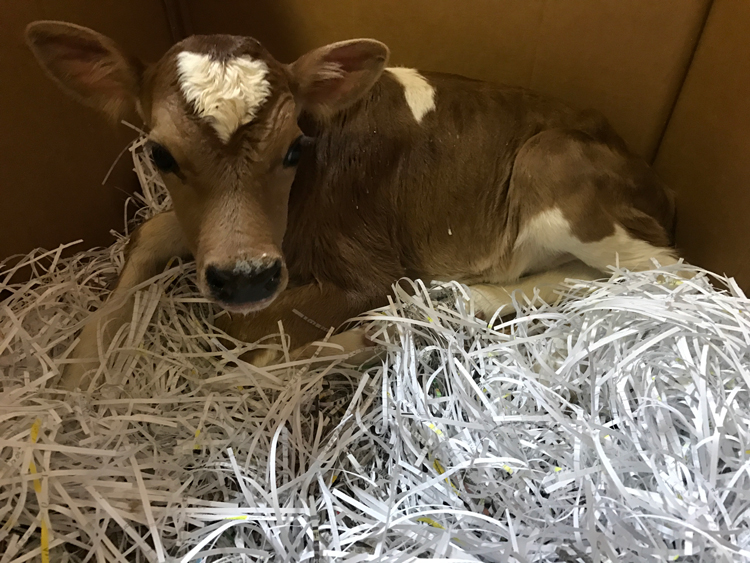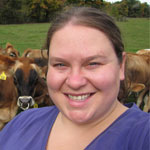
I’m pretty sure I spend more time with our calves than anyone else on our farm. And if you’ve been following my articles, you know that’s by design. I believe that the number one best thing for a dairy’s calf program and milking parlor is consistency. I also believe that having someone in the barn who knows your calves and cows is ultimately what makes them thrive. So, we have two main calf feeders, and I am one of them. And right now, I’m not okay.
Yesterday in Pennsylvania, the temperature was under 30°F, and tomorrow we’re supposed to see temps in the 50s! Most people are just excited to drive home from work with the windows down and feel the sunshine through their windowpanes. But I’m not most people. I feed calves. If you’re a calf feeder, too, you know exactly why I’m dreading it. These temperature swings wreak havoc on our calf barn. We can turn on the fans, put on or take off calf jackets, and open or close up the barn as much as possible, and for some reason, the calves still either get too much or not enough ventilation. These random midwinter warmups mean one thing: respiratory chaos.
For the next week, every animal that so much as looks at me funny will have their temperature taken. And every calf with a temp over 102.5°F will get treated for pneumonia. Because that’s what calves do.
I swear they’re not even sick. Last week, we had a calf that was eating every piece of hay and pellet of grain but only drinking half of her water. She was bright-eyed, feisty, and, by all appearances, perfectly fine. I heard her cough once and was taking the temperature of the calf next to her and thought, “Why not? I’ll take hers, too.” The calf I was originally worried about had a temp of 102°F, while her neighbor’s was 104°F. Where does that even come from? No one in their right mind would’ve randomly checked that calf, and by the time she’d have shown serious symptoms, it may have been too late.
I feel like all winter, calf feeders have been carrying bottles of antibiotics and holding their breath every time they feed. Yes, the cold temperatures come with their own challenges, but generally, disease isn’t one of them. Bacteria doesn’t like below freezing temperatures any more than your hose does. And I don’t know about you, but there’s something about my calves struggling that I just can’t handle. To me, of all the places on the farm, the calf barn is the one that makes me feel the most inadequate. Just when I think I have a protocol figured out, everything changes and nothing seems to work.
I don’t really have advice because I’m still figuring it out, too. I’m just saying maybe check on your calf feeders. Maybe give them a feeding off. Or a raise. Because these adorable little faces are killing me.

The author dairies in partnership with her parents and brother at Spruce Row Farm in Pennsylvania. Jessica is a graduate of Pennsylvania State University, and since 2015, she has been active in promoting dairy in her local community. You can find her and her 250 Jersey cows on Facebook at Spruce Row Dairy or on Instagram at @seejessfarm.





